My Muse States: John Barton in Conversation with Lara Martina
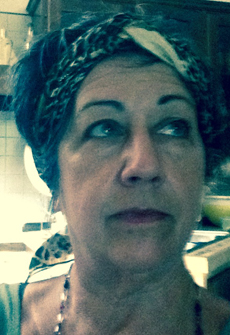
Malahat editor John Barton talks with Lara Martina about her collaborations with George Elliott Clarke to illustrate poems from the body of his work. Among their many projects, they are collaborating on illustrations inspired by Clarke’s poem, "Othello: By Donatien Alphonse François, Marquis de Sade," appearing in the Summer 2016 issue of the Malahat. Lara’s art focuses on ideas of eroticism and the muse, and their influence on the artist and the author. A seventh generation Canadian of Mi’kmaq, French, and Italian-American heritage, she lives in Bear Cove, Nova Scotia.
How long have you been working with George Elliott Clarke?
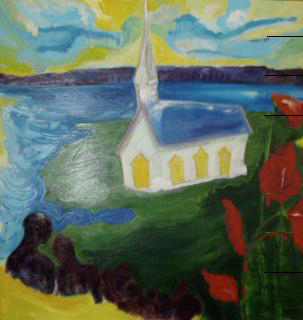
Lara Martina, We are the Coloured Christians of the Guysborough Road Church
I cold-called Dr. Clarke in the fall of 2009, asking his permission to use his words, "We are the Coloured Christians of the Guysborough Road Church" for the title of a painting. When the Nova Scotia Art Bank bought it, I sent GEC a letter to let him know. He wrote back, sending a poem, "Letter to the (African Baptist) Messiah." As soon as I read the second line, "Blunt Black Being from Beyond," a very strong image came to mind. Later, I was invited to see him perform and it was his face, his movement to word, that captured my interest—the joy! His body spoke JOY and BEAUTY! I have been illustrating his work continuously since.
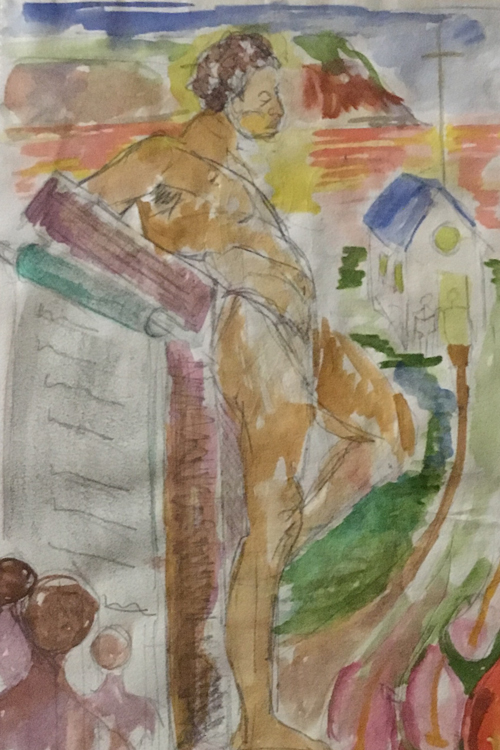
Lara Martina, Letter to the (African Baptist) Messiah
Have you illustrated other poems besides "Othello: By Donatien Alphonse François, Marquis de Sade"?
The first illustrations requested by George were used for the cover, frontispiece, and end piece of his book, Traverse, in 2014.
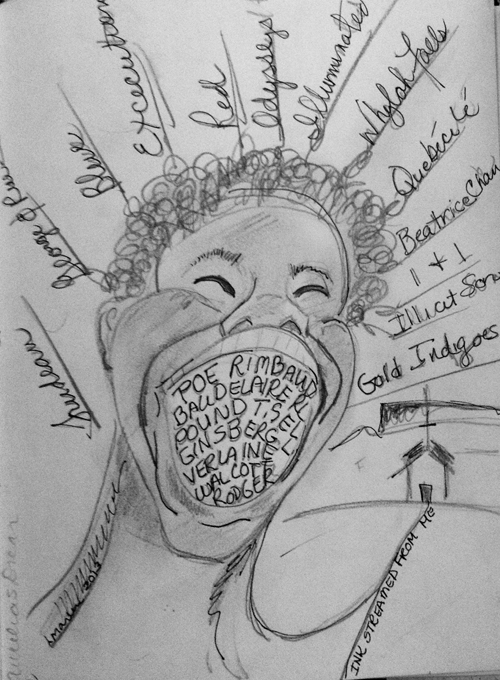
Lara Martina, Ink Streamed from Me (illustration for George Elliott Clarke's Traverse, with titles of George's books around his head, his mouth full of his poetic influences) that was not used for the book.
What do you look for when deciding to illustrate a poem, especially one as long and as complicated as "Othello…"?
Word evoking imagery! Word combination: "Pernod white" (Gold); phrase: "I step through snow as thin as script "("Blank Sonnet," Whylah Falls). Words that create beat, blues, music: "The long, black whips of sentences snap, herd masses into mobs" (Blue). George is after all a songster, a bluesman, a musician! My narrative paintings as well as my creative writing are known for inclusion of text, lists, and litanies. Like my art, George is text, list, litany!—
"Hence, I accepted the alba, the aphorism, the aubade, the ballad, the blues, the chanson, the colophon, the cornice, the distich, the elegy, the envoy…"
—Whylah Falls
"Gold Mine Golf Foil, Gold Coin, Gold Star, Gold Heart, God Leaf"
—Gold
I write or sketch my immediate response in the margins.
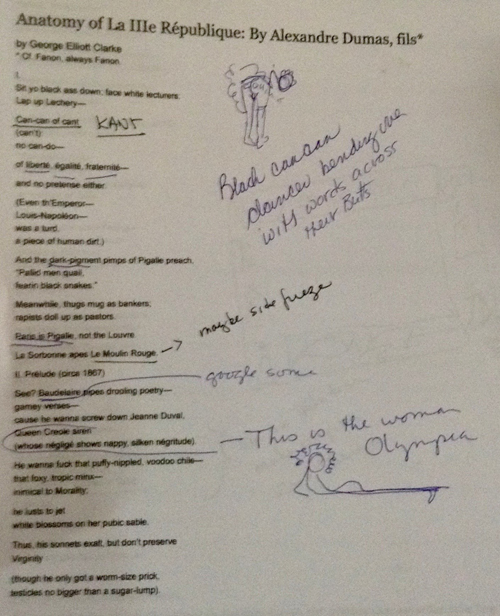
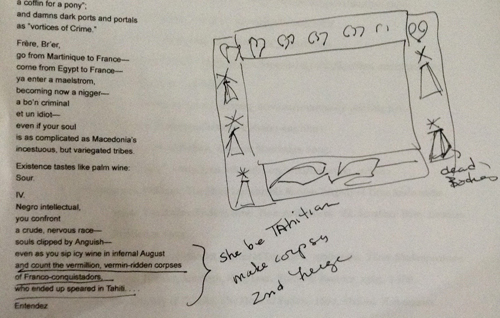
Lara Martina, sketches on published poems by George Elliott Clarke
I may not come back to work up a sketch for years as in "Blunt Black Being from Beyond," which I sketched in 2010. I have since re-drawn this in a large format many times. It is still in transition and has become a painting of George and in the triptych, Codex Gigas [Latin for "Devil's Bible"].
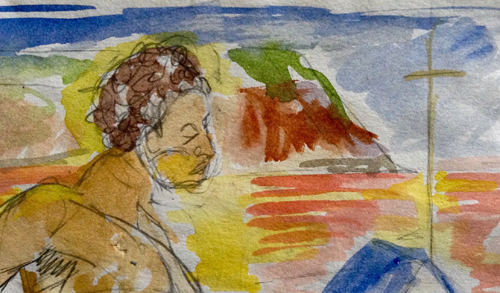
Lara Martina, Letter to the (African Baptist) Messiah (detail)
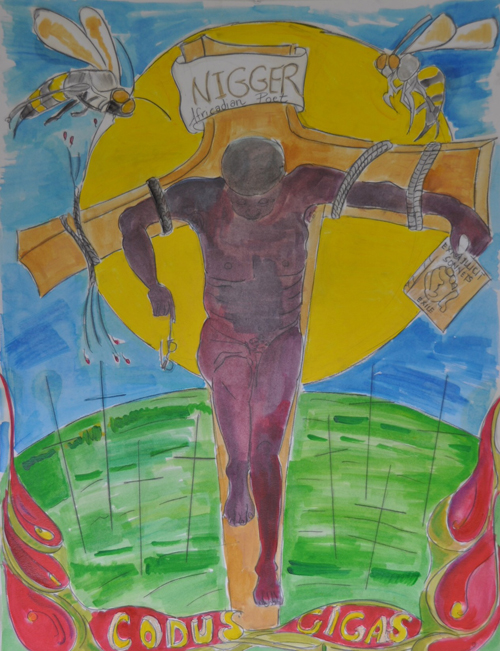
Lara Martina, Codex Gigas (work in progress)
George's books are singular works, but they are a continuum of self. Across his writing are word(s), ideas that I catalogue. I use that catalogue to create symbolic images that speak of his connection to landscape, place, and person. I sometimes include a "word" in an illustration because I like the texture of it in my mouth—Codex Gigas, Nofaskotian!
Then, of course, there are words that symbolize place for me: cala lilies (Africville), Lombardy poplars (Nova Scotia) redwing blackbird (life), church (community), spindle top house (family). Mind now, if I didn’t connect with George I wouldn’t illustrate his work. I feel he and I are two sides of one person—conjoined as it were spiritually—alter egos. Or you could say George is my current muse! Capital M!!
Is the imagery in a poem like "Othello"—which is so prolifically and richly created in the reader's mind by George's specific, engaging language—a hindrance to or a support of your process as an artist? Do you see your work as a visual complement to or as a visual extension of his poem?
I become the poem. I am a character in the poem. Participant. Observer. Aroused. Angry. Judgmental. Content. It is a trigger for my visual work as it ultimately triggers something within the self, ranging from the nasty to the sublime. Some of the art for " Othello" was done tongue in cheek, in a pulp-fiction style, a là John Fraser, one of George’s old professors. I wanted the reader to laugh. Perhaps to offset any interpretation of sexual violence. Erotica, my idea of it and that of others has always fascinated me, as well has the idea of the muse. Some of drawings for "Othello" are based on images of well-known artists’ muses.
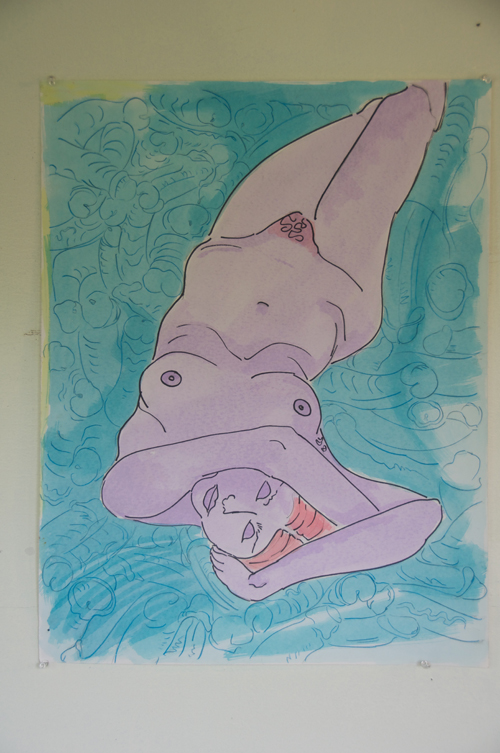
Lara Martina, Gold is the Silver Lining of Adultery (Othello)
When you create an illustration of a literary work, is it important to you that the former can stand independently of the latter? If so, how do you go about doing so?
They can stand separately from the text, apart or together. The art is art and the poem is the poem and sometimes they are so entwined they are a new thing. No need to explain the work. It has only to be meaningful to me. I'm not really illustrating for George, I'm illustrating for myself. The subject matter has to be of interest to me. George's poetry is flavoured by my own world. Not for who will understand, who will publish, who will buy. There is just a need to create beauty and beauty can be ugly. I am at peace in that world of creating.
How would you define what a good "illustration" is? And is "illustration" the appropriate term for what you're creating in response to a work like "Othello…"?
I think it's easier to say what bad illustration is—poorly printed illustration; sloppy, bad book design that makes poor use of what is good art; an editor's choice that doesn't work with the text; a lack of financing for poetry publication, use of stock photos, lack of time; other constraints such as a deadline. When I use the word "illustration," it can be in conjunction with text or without. A painting is something else and art—another thing again. That being said, illustration can be art as can a painting. And sadly, the immediacy of a sketch is sometimes lost in translation to a finished piece.

John Barton
* * * * * * * *









